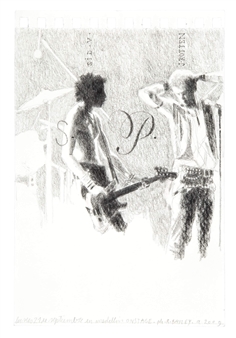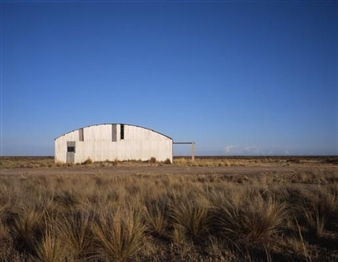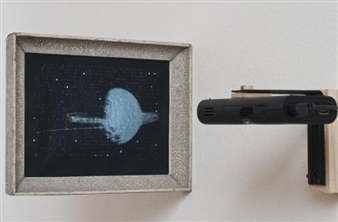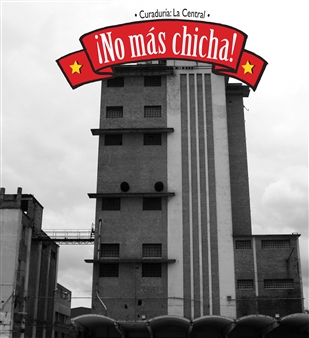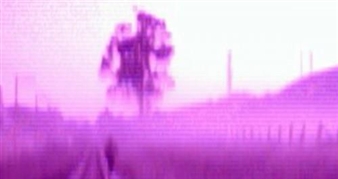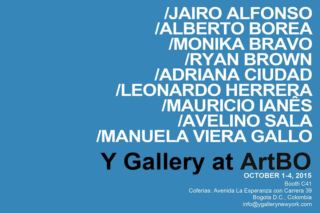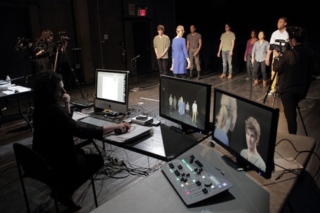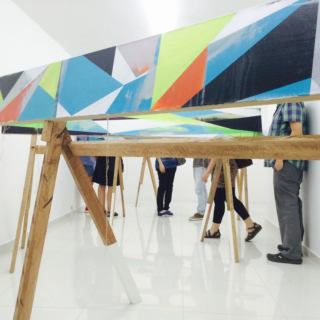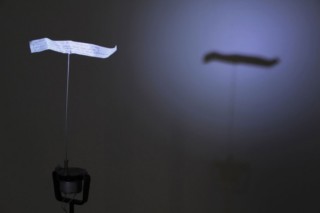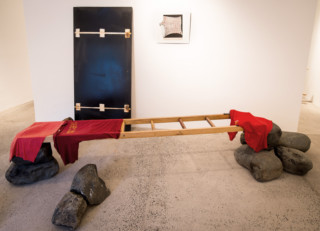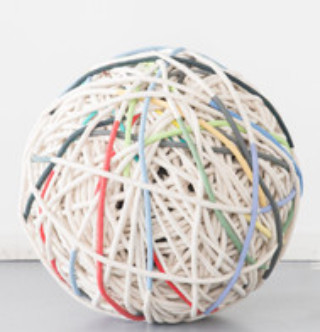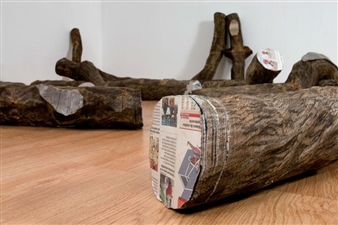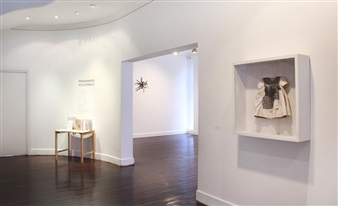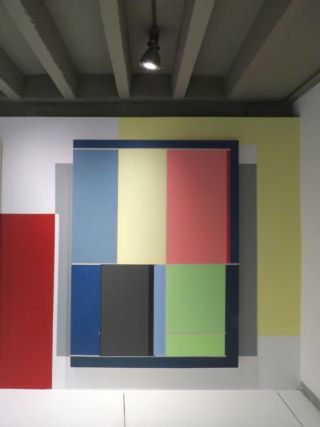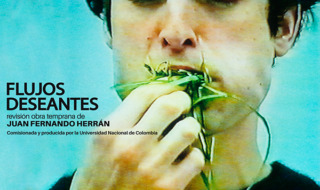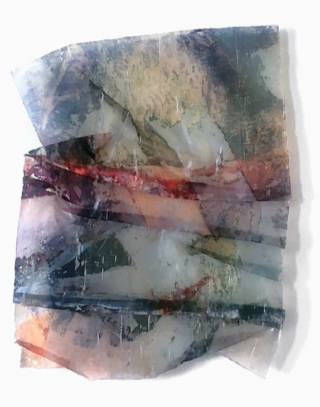The sound of the word is beyond sense
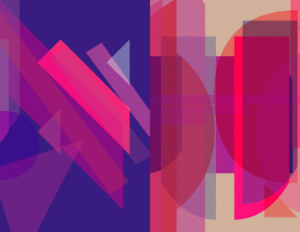
(bis) | oficina de proyectos, Valle del Cauca, Cali, 07/17/2015 - 08/15/2015
Calle 23 Norte # 6AN-17, Cali
BEYOND SENSE
On the Arche-types of Monika Bravo
Where to begin?
I don’t even know how to ask.
Too many tongues are mixed in my mouth. But
at the crossing of these winds,
very diligent, I immerse myself
in the laws of the heavenly grammar: I am learning
the declensions and ascensions of silence.
Dan Pagis*
As if entering an unknown landscape—pure and remote, without a known history or familiar signs—we are placed here on a sort of journey, perhaps a journey inward, similar to the one that Basque writer and philosopher Miguel de Unamuno relates to our experience with Nature, or what Mallarmé called the Spiritual Universe, or what Malevich understood as the space of the wilderness. Beyond the limits of personal, individual experience, in an attempt to identify spiritually with the cosmic environment of the universal landscape by means of the artwork, our task seems to be designed to approach a sort of primal entity having no meaning or time.
This journey might take a lifetime, but here, through the magic of the artist’s devices—which are not really different from the “instant Nirvana” that Timothy Leary talks about when referring to LSD—we may experience that collective, inherited, unconscious idea, the pattern of thought or image, that Jungian psychology calls Archetype. And yet, this is not necessarily a direct experience, but a reading.
We want to read from within a place that is not the collection of the work’s beautiful elements, its singular features, or its memorable moments, but rather the intensity of its visual and aesthetic palimpsest, of colors and letters that do not seek harmony or reason. Instead, they are all signs for the absence of definable meaning. So we may say that we are reading from a site in which we are placed on the edge of an abysmal void.
We have been here before—you may think. And someone says that, after White Square on a White Ground, “it almost seemed as though Malevich had created a black hole with his paintings that devoured modern art and then gave birth to new universes. After Malevich, paintings were ‘purified’ and ‘emptied.’ Painters pursued art ‘as such,’ reducing their paintings to pure color or geometric form and stripping them down to their fundaments: the painted surface and the support. Archetypes were conjured up and final images painted once more. There were images of nothingness, of a sublime something, and an ominous everything. Painting became ontological and philosophical, entirely material or entirely spiritual” (1).
Indeed we have been here before—long before. But where to begin? In the beginning was the word, it is written. But the word in this place is not a word, and it is not even a beginning. The letters we encounter here are examples of a modular stencil sans-serif typeface, Archetype Albers, based upon a series of experiments between 1926 and 1931 by Josef Albers at the Bauhaus. Here, they are not used to make up any word, and they can hardly make any sense. The artist declares that the sound of the word is beyond sense. In other words, “the sound” (as form) begins not with a meaning, but with vibrations, waves, and energy, a sort of rhythm that perhaps might be capable of transforming itself into meaning. But what meaning are we talking about when addressing what is beyond sense?
Referring to poetry, Amittai Aviram explains that “the irreducible element of unreadability” can be identified with the principle of Dionysus presented by Friedrich Nietzsche in his The Birth of Tragedy, and, indeed, the relation between poetry/art form and meaning matches up with Nietzsche’s dyad of the somewhat allegorical figures, derived from Greek myth, of Dionysus and Apollo. “[T]he relation between them is what makes poetry possible; neither can really exist in isolation” (2). The author goes on to say that, beyond music and intoxication, Dionysus offers a profound truth: “that our … individuality, and the … discreteness of everything in the world that we perceive, is in fact a product of the very veil of illusion for which the Apollinian principle is responsible. In other words, the potentially overwhelming truth is that the ‘real reality, behind all this show of appearances’ (to borrow Walt Whitman’s phrase), is a kind of nothingness, a primal unity, having no space, time, or other mode of individuation” (3). In Derrida’s terms, “there is nothing outside the text … no entities that could be identified as such, since the very process of identification requires such things as subjectivity and perception”. As Aviram reminds us, in Derrida’s view, “these functions are aspects of the ‘text’ —the sign system—in which we live and breathe, insofar as we are we. Our identities and identifiable individual entities around us are constructs made possible, according to Nietzsche, by the veil of illusion, or, according to Derrida, by the system of language” (4).
The reading gets a bit more complicated, not just because of Derrida’s emphasis on the elusive relationship between words and images: “And if I love words it is also because of their ability to escape their proper form, whether they interest me as visible things, letters representing the spatial visibility of the word, or as something musical or audible. That is to say, I am also interested in words, paradoxically, to the extent that they are nondiscursive, for that’s how they can be used to explode discourse… It’s when words start to go crazy… and no longer behave properly in regard to discourse that they have more rapport with the other arts, and conversely this reveals how the apparently nondiscursive arts such as photography and painting correspond to the linguistic scene..” (5). In addition to all this, the complication comes from the proliferation of colors, which actually distinguishes this and most of Bravo’s recent works.
Following Albers, color is constantly changing in the work, and we always see it in relation to the colors that surround it. It is almost impossible to see a color by itself, not interacting with its surroundings. In truth, color is understood by comparison and contrast. But, through Albers, Bravo knows that color is deceiving, and that, when he talks about visual perception, he is talking about something deeper than the way we look at the world. Bravo understands that Albers is not giving her a set of rules about color, but different tools and ways to unlock “emptiness”, an aesthetic of the everlasting.
For More Information
